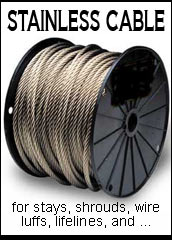The long hedged dream of building a boat, took about 10 years to become a floating reality. My 30ft tacking outrigger, Arpex, was launched on the in December 2014, after 7 years of construction. Designing and planning took another good 3 years before that.
The feeling of designing and building a boat, and then see it being launched is hard to describe. To everyone considering to start such an adventure, I can say is that it involves fair doses of insecurity and fear, but also greater amounts of joy and great satisfaction. In my case, the later prevailed. I actually enjoyed every step of the long path.
As a kid, I liked messing about with model boats. I would produce them out of anything available, and follow them mesmerized, as they sailed off into the sea, after launching them. The desire to one day build my own boat, one I could actually sit and sail on, was a natural extension of these playful times as a kid, I suppose.
I lived many years far from the sea, in Germany, during my studies. After that, my job as a business consultant took me here and there, across Brazil, for work assignments which consumed my time and focus. Only after settling back in Rio de Janeiro, I took to the challenge of actually putting hand to work, and build my own boat.
Arpex was designed as a platform to enjoy the surrounding seas of our beautiful bay of Rio de Janeiro during weekends. Stability, speed and open deck space were important requirements. I wanted a boat that would be fun to sail, and still offer good recreational value, as a floating bathing deck. But to provide shelter from sun, sea, wind and rain, for my lovely wife, it would also need to have a small cabin and sleeping capability. Not to speak of a great view out and forward, besides good contact with the deck, in order to keep her in the action.
Multihulls had caught my attention a long time ago, after reading a book of a guy who designed and built his own catamaran, and then sailed it around the world. I had researched a lot about all sorts of multihulls already, and had bought study plans for different designs. The simple construction techniques attracted me. It seemed so easy. I also bought the design for the Melanesia, from James Wharram, a tacking outrigger. That must have been the first time I saw this asymmetric configuration, which seemed interestingly different. It startled my curiosity, and I began looking into the different possibilities – catamarans, trimarans, proas, outriggers, you name it.
 |
These were the sketches I gave to the engineer |
 |
I developed a visual identity for the project |
It was not a long way from there to the first sketches for Arpex, my own tacking outrigger. My idea was to build something different, out of the ordinary. So why not an unconventional, experimental concept altogether? At fist, my attention was towards shunting proas. However, the complications with steering and the rig deterred me. Also, the whole concept of shunting… I preferred a boat with directional commitment. The problem with the tacking outrigger was to master the structural loads, while still maintaining a light enough package. Since I’m not an engineer, I hired one, to draw the hulls and make the specifications and material list, after a detailed briefing of my concept for the boat. That step took almost two years to complete.
The result of the commission was not quite as I had expected. However, the time for planning was over. Now it was a question of quitting, or jumping in, and finding out. With an odd feeling in my stomach, I bought a pile of fine Freijó wood, the Brazilian Sitka Spruce, and a couple of sheets of plywood. The odd feeling was just like when my father took me and my brother and sister, as kids, for a cliff jump from the Arpoador Rock, a rocky point on the left corner of Ipanema Beach. It was a regular challenge when going to “Arpex” Beach, which is how the surfers nicknamed it. The short moment in time, between leaving the rock, and diving into the cold water - for then, you just had to swim through surf and tide, to get to the beach. There was no way back … This is how I came to the name for my boat.
In the first year, I worked together with an experienced boat builder. With him, I learned many techniques, including how to handle epoxy, and how to laminate fiberglass. Easy stuff, but easier still, if there is someone to show how to do it the first time. However, after one year into the construction, things didn’t go in the direction I wished, and we parted company. From there I was on my own. By then, the main hull structure was ready, and I thought: “Hey! If you have a hull, you have a boat! Almost done. This is quick and easy!” But in fact, I still needed to fair the hull, and then turn it, build decks, cabin, spars, rudder, all the finishing…… All right, thinking about it, the job list was still very, very long.
But every new item was an interesting challenge. I had no detailed plans. The plans I received from the engineer contained mainly hull lines,… not much more. Therefore, every detail had to be developed by myself, from rudder and steering, to hatches, rigging. The whole thing, really.
My wife and I made an arrangement; one day a week would be dedicated to the boat, Saturdays. Sunday was the day for us to be together, her day. Keeping it that way, we managed. She gave me great support all along the way.
 |
Frames were built for the main hull |
 |
Inside the cabin |
One day a week does not allow for many effective hours of work. Which is why weeks turned into months, which turned into years. Slowly but steady the boat took shape. While family and friends became increasingly impatient, I never really did. I was enjoying the ride, so why rush? I took it step by step, solving problems as they came. In my mind I had a clear vision of what I wanted. And I marveled, when I started seeing that very vision taking shape, and becoming solid reality.
My boat was launched two months ago. It didn’t sink nor make water. Good start. And it also performed as I had in mind under sails and engine. Arpex sailed well on all points of sail, and maneuvered handsomely. On the first sail we made 14 knots! At all times response to the rudder was positive, and I felt in control of the boat. So far so good. But the project is far from ready – if it ever will.
 |
First test under engine. Note the small tender on the deck |
 |
First tests under sail |
If you feel like checking out more, I have made a detailed report about every step of the construction progress on my construction blog: arpex.blogspot.com
 |
Arpex on its mooring at Urca Beach, in Rio de Janeiro, Brasil |
 |
First time hoisting the sails |
|














